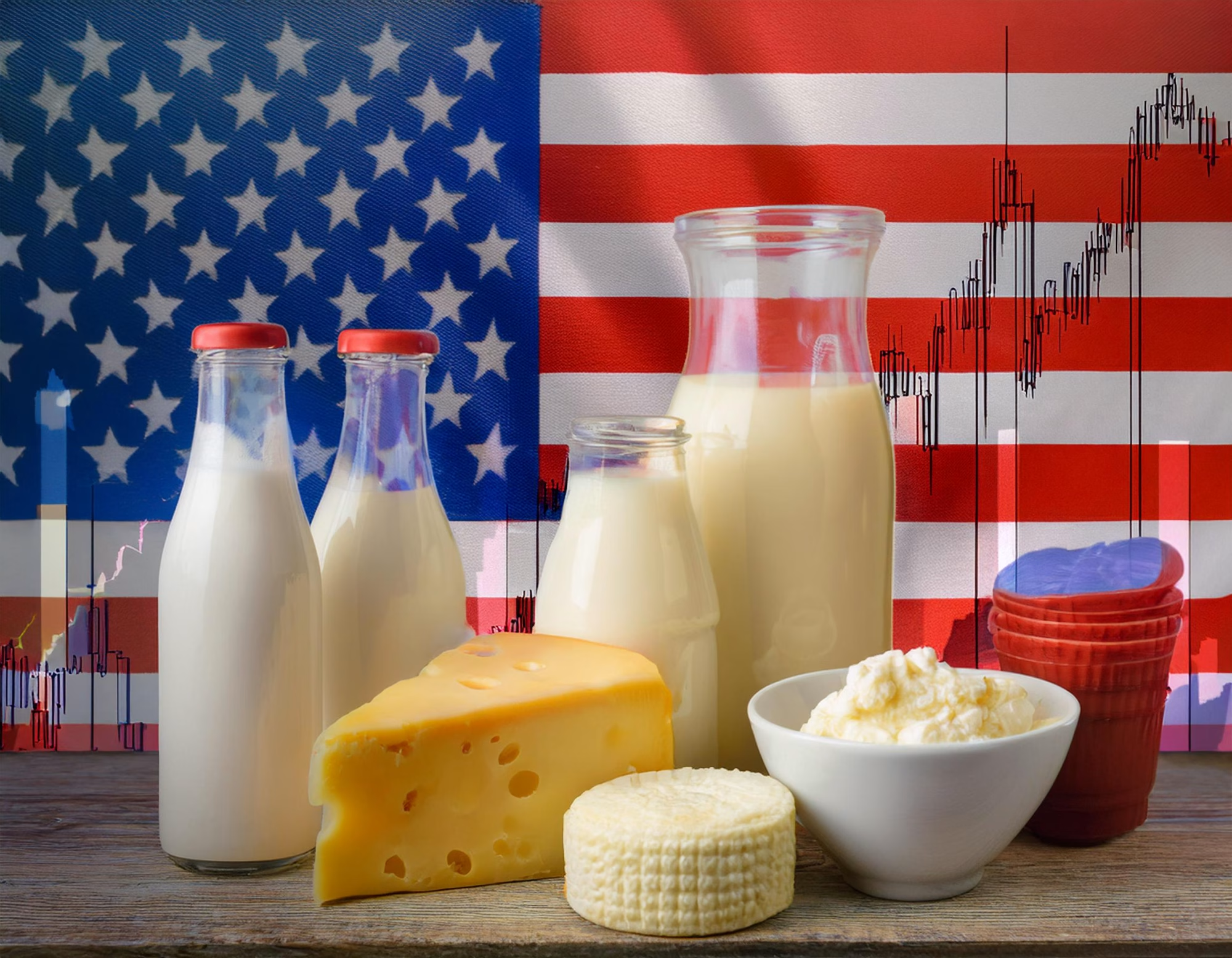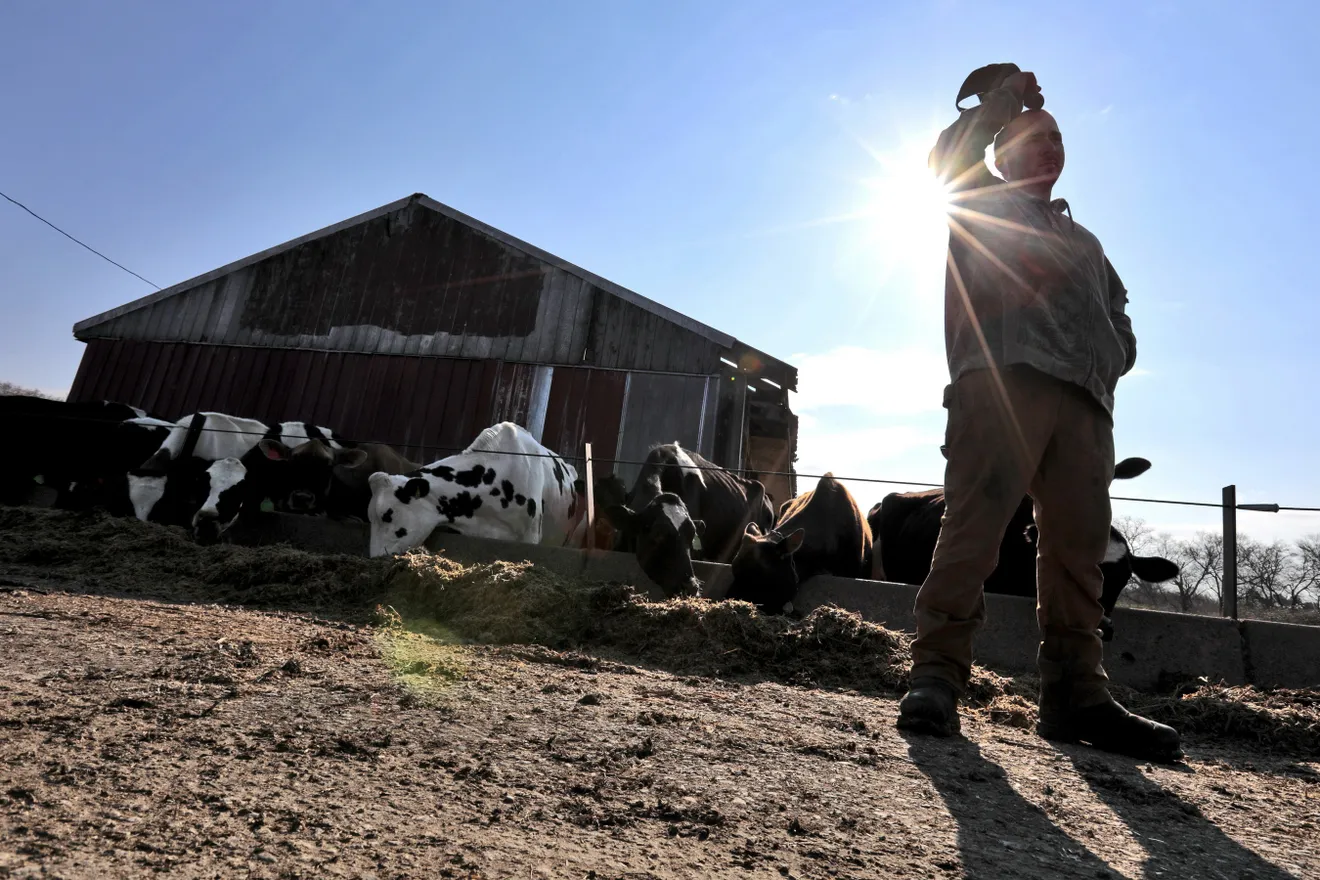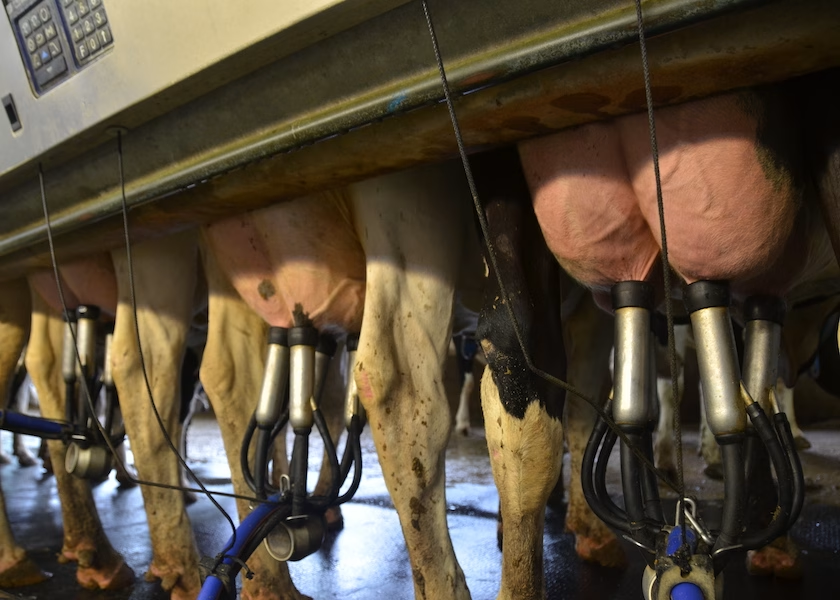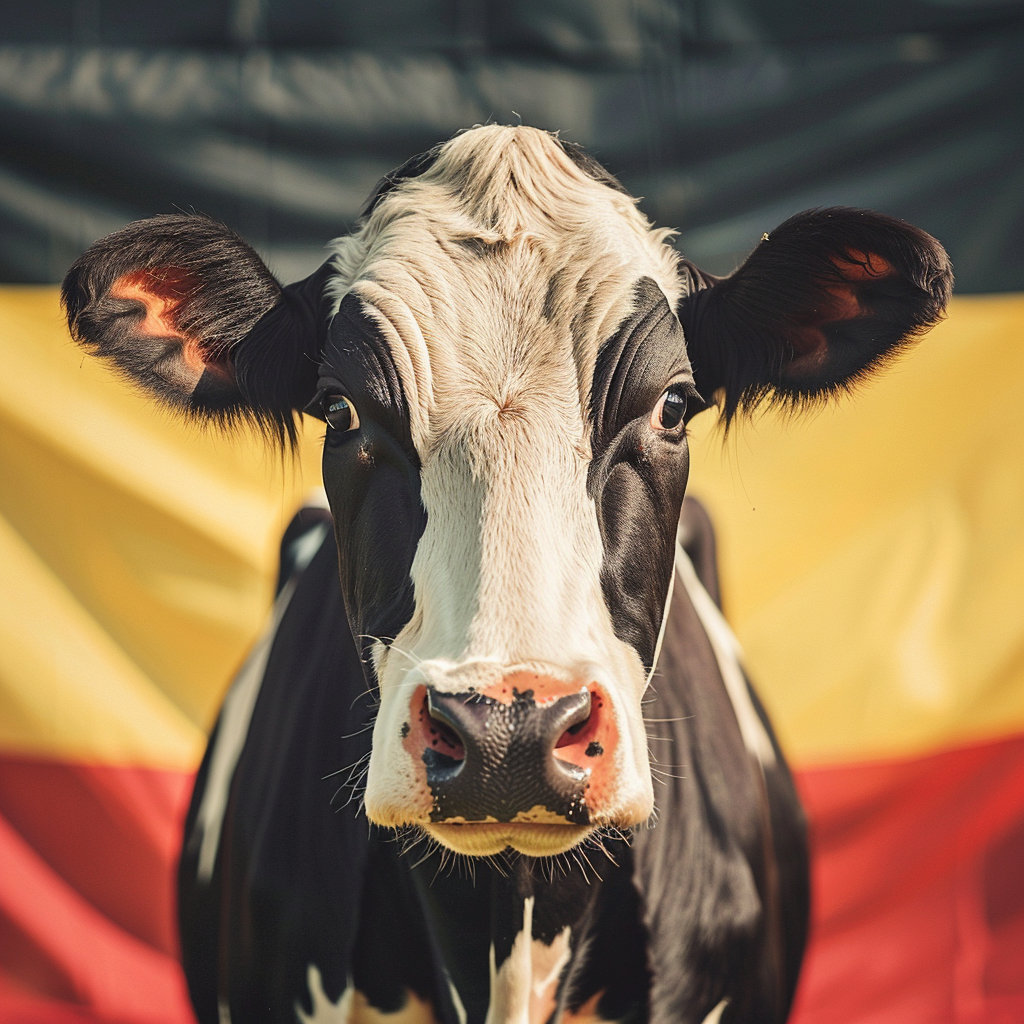Find out why U.S. milk production is at historic lows and what you, as a dairy farmer, need to know to get through this crisis. How will this impact your farm’s future?
Summary: U.S. milk production has been declining for 13 straight months, with June and July seeing historic drops of 1.7% and 0.4%, respectively. As the dairy herd shrinks and ages, spot milk prices have soared due to strong demand from bottlers and processors. Global factors, including active Chinese participation in the Global Dairy Trade auctions, have further complicated market dynamics by pushing milk powder prices higher. U.S. cheese inventories are at their lowest since 2020, and overall dairy product prices remain volatile. Dairy farmers face significant pressures but have opportunities to mitigate these challenges through strategic herd management, quality feed, and market awareness.
- U.S. milk production has faced a decline for over a year, creating historic drops in mid-2023.
- The shrinking and aging dairy herd has resulted in higher spot milk prices.
- Strong demand from bottlers and processors is driving up milk prices.
- Increased participation from Chinese buyers in Global Dairy Trade auctions has pushed milk powder prices higher.
- U.S. cheese inventories are at their lowest levels since 2020, reflecting volatility in dairy product prices.
- Dairy farmers can combat these pressures with strategic herd management, quality feed, and staying informed about market trends.

Milk output in the United States is on track for a record reduction, with production falling for 13 months—the most extended period in modern history. The USDA reported a 1.7% decline in milk output in June, followed by a 0.4% fall in July. What does this imply for your farm and the future of dairying in America?
| Month | 2023 Milk Output (million pounds) | 2024 Milk Output (million pounds) | Year-over-Year Change (%) |
|---|---|---|---|
| June | 18,575 | 18,260 | -1.7% |
| July | 18,430 | 18,360 | -0.4% |
| August | 18,800 | 18,700 (est.) | -0.5% (est.) |
America’s Dairy Slump: Facing the Hard Truths of Historic Milk Production Declines
The present status of U.S. milk production is distinguished by unprecedented decreases, with a 1.7% loss in June and a 0.4% dip in July compared to last year. These numbers highlight the most severe two-year slump in decades. The USDA has updated its projections, indicating a lower dairy herd of 9.325 million cows in July, down 43,000 from July 2023. This diminishing and aged herd cannot support considerable growth despite seasonal mild temperatures.
Feeling the Squeeze: How Declining Milk Production Hits Dairy Farmers Hard
| Month | Number of Milking Cows (2024) | Number of Milking Cows (2023) | Year-over-Year Change |
|---|---|---|---|
| January | 9,368,000 | 9,392,000 | -24,000 |
| February | 9,355,000 | 9,385,000 | -30,000 |
| March | 9,325,000 | 9,371,000 | -46,000 |
| April | 9,312,000 | 9,362,000 | -50,000 |
| May | 9,300,000 | 9,354,000 | -54,000 |
| June | 9,290,000 | 9,338,000 | -48,000 |
| July | 9,325,000 | 9,368,000 | -43,000 |
| August 1-23 | 9,332,000 | 9,376,000 | -44,000 |
So, how does the drop in milk output affect dairy producers where it counts the most? Let’s dig right in.
First and foremost, sustaining herd numbers becomes an uphill task. Dairy producers find it more challenging to manage their herds at ideal size. The USDA reported a 43,000 head reduction in milk cows from July 2023 to July 2024. Maintaining herd numbers has become a difficult challenge. Dairy producers need help managing their herds at appropriate levels. The USDA announced that the number of milk cows had decreased by 43,000. That’s a considerable drop, making it challenging to build up output.
Furthermore, higher cull rates exacerbate the situation. Farmers have little option but to cull their older, less productive cows. But here’s the kicker: the surviving cows aren’t growing any younger. According to the USDA, the dairy herd is aging, and older cows produce less milk. What are the consequences? A less efficient herd is failing to satisfy demand.
The actual data provide a striking picture. For the last 13 months, milk production in the United States has been lower than in the previous year. USDA figures indicated a 1.7% loss in June, which eased somewhat to a 0.4% drop in July. This protracted fall is not a fluke but a pattern with far-reaching consequences (USDA Milk Production Report, 2024).
So, what are farmers to do? Producers are working to fill every stall and reduce cull rates. However, the truth remains: a decreasing, aged herd cannot satisfy rising demand, making milk and other dairy products a valuable and costly commodity.
Have you felt the pinch yet? You are not alone. But knowledge is power, and knowing these obstacles is the first step toward overcoming them.
Spot Milk Prices Soar: Bottlers and Processors in a Tug-of-War
| Month | 2024 Price ($/cwt) | 2023 Price ($/cwt) | Year-over-Year Change (%) |
|---|---|---|---|
| January | 20.75 | 22.10 | -6.1% |
| February | 21.00 | 22.00 | -4.5% |
| March | 21.50 | 21.75 | -1.1% |
| April | 22.25 | 21.50 | 3.5% |
| May | 23.00 | 21.90 | 5.0% |
| June | 22.75 | 22.30 | 2.0% |
| July | 23.25 | 22.50 | 3.3% |
| August (up to 23rd) | 23.50 | 22.75 | 3.3% |
Right now, the market is congested and busy. Spot milk commands a significant premium above Class III in the central area, ranging from $2.25 to $3.00 per cwt. The increase in spot milk prices is causing processors and bottlers to feel the squeeze.
On top of that, milk powder costs are rising. This week, CME spot nonfat dry milk (NDM) rose 2.75¢ to $1.2825 per pound, the most since January 2023. Whole milk powder (WMP) increased by 7.2% to its highest level since October 2022, while skim milk powder (SMP) recovered by 4%.
As schools reopen, the demand for milk in meal programs increases, and bottlers vie furiously to get supply. This ‘milk tug-of-war’ forces other processors to operate more lightly, complicating operations and raising expenses. Understanding this dynamic can help you anticipate and plan for potential disruptions in the supply chain.
Global Demand: China’s Milk Powder Purchases Spark U.S. Market Surge
The dairy market in the United States is heavily influenced by global demand. Recently, increased activity from Chinese purchasers has played a vital role. After more than a year of modest purchases, China’s participation in the August Global Dairy Trade (GDT) auctions pointed to decreased milk powder stocks in the nation. This rise in Chinese demand increased prices for whole milk powder (WMP) by 7.2% and skim milk powder (SMP) by 4%.
Such worldwide interest directly influences U.S. milk powder pricing, resulting in significant profits. For example, spot nonfat dry milk (NDM) prices increased to $1.2825 a pound, the highest level since January 2023. This considerable growth may be attributed to rising imports from China.
This increasing overseas demand improves the US dairy business as a whole. Export sales contribute considerably to overall market dynamics, mitigating the impact of decreases in local production. As Chinese whey imports increased by 13.2% in July and WMP imports behind the previous year’s amount by just 4.6%, US producers found a confident customer, helping to stabilize prices in the face of local concerns.
Butter and Cheese Frenzy: What’s Happening?
Let’s discuss the butter and cheese markets. Butter stocks fell quicker than expected in July, although there was still 7.4% more butter on hand at the end of the month than a year earlier. Prices fell, with CME spot butter down a cent to $3.13 per pound. Despite this, butter purchasers are still on edge, swapping over 100 cargoes in Chicago last week and another 54 vehicles on the spot market this week.
Cheese supplies are also under strain. Historically, cheese stockpiles in the United States grow by around 30 million pounds between the end of February and the end of July. This year, however, inventories have fallen by 50 million pounds. On July 31, the end-of-month cheese inventory was 1.4 billion pounds, the lowest since late 2020 and 5.8% lower than the previous year. CME spot Cheddar barrels closed at $2.10 per pound, a 15.5 percent loss, while blocks finished at $2.0375, a 6.25 percent decrease.
Navigating the Storm: Proactive Strategies for Dairy Farmers in Turbulent Times
Facing this daunting scenario, dairy farmers need proactive strategies to navigate these turbulent times. Here are some actionable tips to help you weather the storm:
Maximize Efficiency in Herd Management
Consider implementing advanced herd management software. These tools can accurately monitor each cow’s health, productivity, and breeding cycles. As herd sizes decrease (down to 9.325 million cows in July), ensuring every cow performs optimally is vital.
“Utilizing data-driven technologies can significantly enhance herd efficiency and milk yield,” says John Smith, dairy management expert at FarmTech Innovations.
Invest in Quality Feed
The nutritional value of your feed directly impacts milk production. Opt for high-quality, balanced diets catering to your herd’s needs. Grain prices have dipped (December corn closed at $3.91 per bushel; November soybeans at $9.37), making it an excellent opportunity to stock up on feed.
Monitor Cow Comfort
Stress can severely affect milk production. Ensure your cows have comfortable bedding, ample space, and a stable environment. Regularly check ventilation and temperature controls, significantly as temperatures drop seasonally, boosting milk output.
Strategize Cull Rates
Although culling less productive cows is necessary, consider a more selective approach. Focus on maintaining a younger, more efficient herd to maximize milk production per cow.
Optimize Milk Production
Studies show that certain practices, like frequent milking and ensuring cows have constant access to clean water, can increase yield. Remember to periodically review your milking equipment to ensure it’s working efficiently.
Tap into Market Opportunities
With spot milk prices soaring (trading at $2.25 to $3.00 per cwt over Class III), it’s a prime time to renegotiate contracts or seek new buyers willing to pay a premium. Consider diversifying your products if possible – cheese and butter prices fluctuate. Still, high-protein dairy products like whey are currently in demand.
“Farmers who adapt quickly to market shifts by diversifying their product lines often find more stable income streams,” advises Laura Anderson, market analyst at AgriMarket Insights.
Stay Informed and Collaborative
Keep up with industry reports and trends. Join local farmers’ groups or online forums to share insights and strategies. Sometimes, the best advice comes from fellow farmers who understand your unique challenges.
Remember, while the current landscape seems challenging, intelligent and proactive management can help you survive and thrive. Keep experimenting with different strategies and stay abreast of market trends to make informed decisions.
The Bottom Line
Milk output in the United States is declining at a record rate, posing substantial challenges for dairy producers. The problems are significant, with milk supply behind prior-year volumes by more than a year, fewer cows in the herd, and higher spot milk prices. Global demand movements, notably from China, and shifting dairy product prices add an extra complication. Maximizing herd efficiency, investing in quality feed, and monitoring cow comfort are critical for navigating these tumultuous times. Strategic market actions are also necessary. Staying educated and collaborative within the industry might offer the competitive advantage required.
Given these unprecedented obstacles, how will you adjust to guarantee the viability of your dairy farm?




















